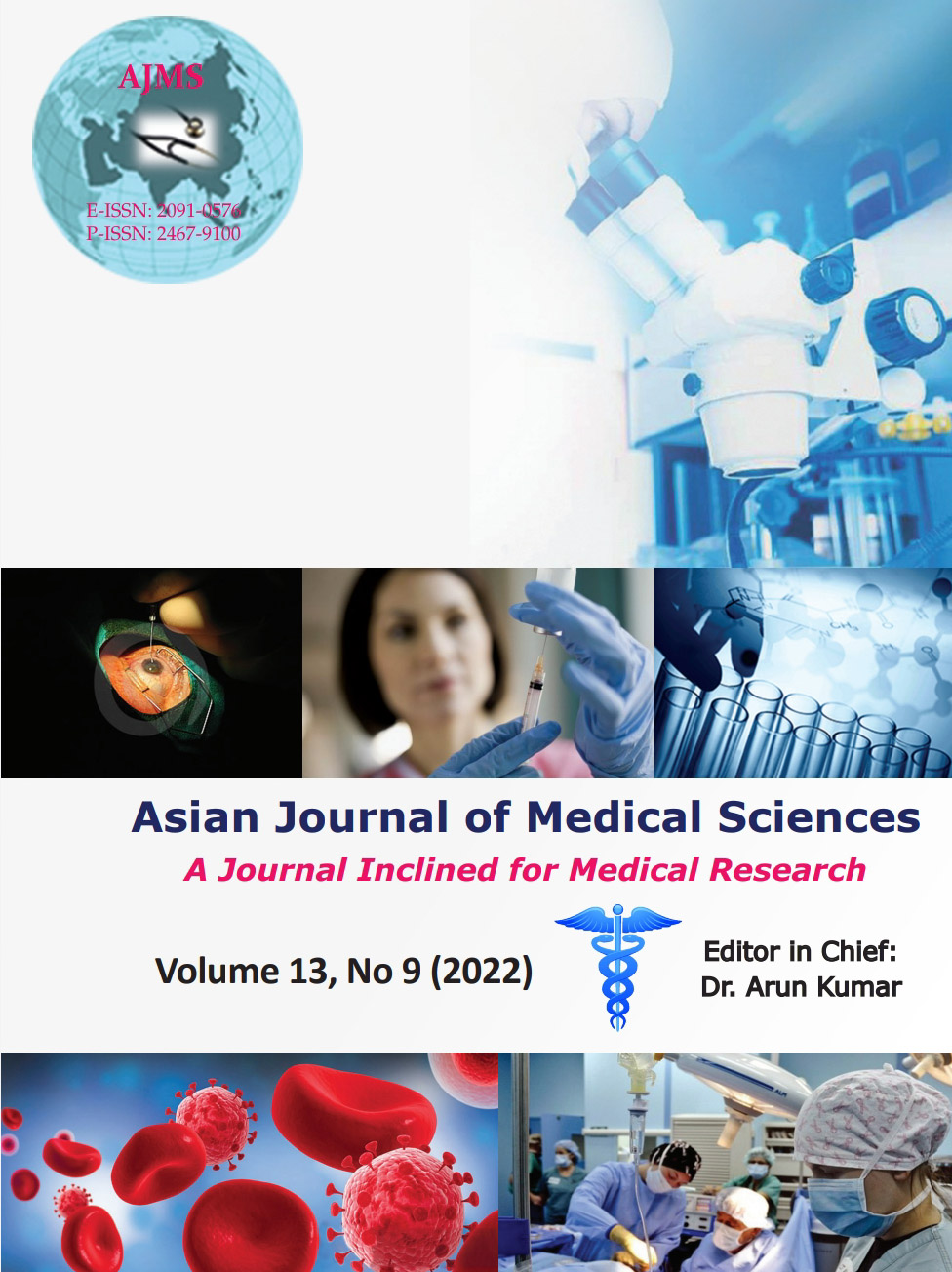Efficacy of urine reagent strips for analysis of cerebrospinal fluid cellularity and biochemical parameters
Keywords:
Urine reagent strips; Meningitis; Cerebral spinal fluidAbstract
Background: Meningitis is a severe infection affecting the central nervous system requiring early management to prevent debilitating consequences and death. Detection of meningitis can be done by the analysis of cerebrospinal fluid cellularity and biochemistry (glucose and protein concentration). Urine reagent strips can be used to assess these variables and reach to the diagnosis of meningitis early, thereby, reducing the delay in the initiation of its treatment.
Aims and Objectives: The current study aimed to determine the efficacy of urine reagent strips for the analysis of CSF.
Materials and Methods: The current prospective study was done in a tertiary care center in Rewa, M.P., on 100 cerebral spinal fluid (CSF) samples obtained from the children suspected of meningitis, which were, then, analyzed by both the conventional methods of CSF analysis (including routine biochemical and microscopic analysis) the index test, utilizing the Combur-10 urine reagent strips for the estimation of CSF cell, protein, and glucose. These results were, then, correlated to calculate the diagnostic utility of urine reagent strips for the rapid diagnosis of meningitis.
Results: The sensitivity, specificity, and diagnostic accuracy of urine reagent strips for the detection of cell count >10/cumm were 81.81%, 98.21%, and 91%, respectively, and 78.57%, 81.25%, and 79% for detection of protein >30 mg/dL. Reagent strips showed a sensitivity and specificity of 96.85% and 79.41% for the detection of glucose levels <50 mg/dL. The two methods showed an almost perfect degree of agreement for the detection of leucocytes with Cohen’s kappa value of 0.86.
Conclusion: Reagent strips can be a helpful bedside screening test for the detection of meningitis and also in resource-limited settings.
Downloads
Downloads
Published
How to Cite
Issue
Section
License
Copyright (c) 2022 Asian Journal of Medical Sciences

This work is licensed under a Creative Commons Attribution-NonCommercial 4.0 International License.
Authors who publish with this journal agree to the following terms:
- The journal holds copyright and publishes the work under a Creative Commons CC-BY-NC license that permits use, distribution and reprduction in any medium, provided the original work is properly cited and is not used for commercial purposes. The journal should be recognised as the original publisher of this work.
- Authors are able to enter into separate, additional contractual arrangements for the non-exclusive distribution of the journal's published version of the work (e.g., post it to an institutional repository or publish it in a book), with an acknowledgement of its initial publication in this journal.
- Authors are permitted and encouraged to post their work online (e.g., in institutional repositories or on their website) prior to and during the submission process, as it can lead to productive exchanges, as well as earlier and greater citation of published work (See The Effect of Open Access).




